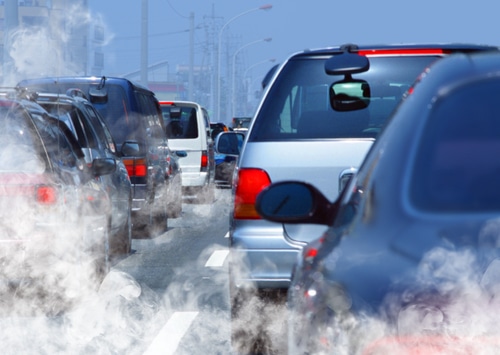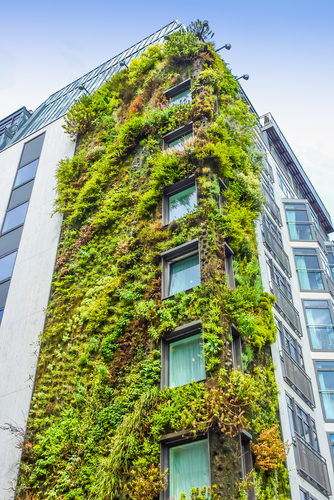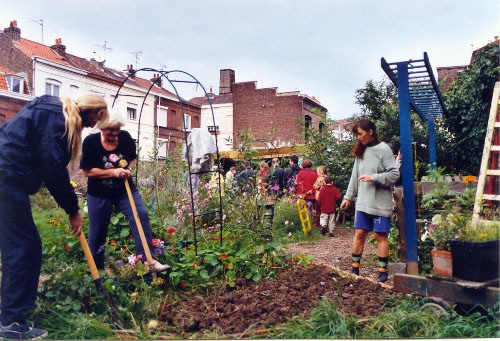What is the best way to be greener on a daily basis? How can we really reduce our environmental impact? We have selected the best practices you can have to reduce your environmental footprint.
The problem is that in terms of the environment, we do not always know from where to start from. Is it better to bet on zero waste practices? To change our diet? Or not to buy specific products? Not all “green” gestures are equally efficient, environmentally speaking.
But by looking closer at the environmental footprint of an average person, and in particular his / her carbon footprint, we can identify the most effective actions that can be taken to protect the planet. Here are 5 practices that will not only allow you to be more eco-friendly, but will also preserve your health and your wallet.
1. Change Your Means Of Transport (And Live In Urban Areas)

Leave The Car Aside – Green Mobility & Transportation Actions In Cities
Taking your car every day to go to work is probably the most polluting thing you can do, therefore, the first thing you can do to be a little more eco-friendly is cut back on being behind the wheel.
Of course, this is not necessarily easy, especially if you live in rural areas or in suburbs, where public transport is barely (or badly) developed. But if you live in the city, it gets way easier in most cases! One study shows that, on average, city dwellers living in large urban centers have a lower impact on the environment than those living in cities, especially in big cities, where it is very easy to get around without using car. Here’s how:
If you still ready think you can’t do it without your car, choising an electric car is also proved to be a better alternative to conventional fossil fuel burning cars, check our article: Are electric cars really eco-friend?
Choose Bikes – Green Mobility & Transportation Actions In Cities
In cities, cycling is often the fastest way of transportation! 15 to 16 km/hr, against, for example, only 14 km/h for a car in traffic. For all trips of less than 5 km (3 miles), cycling is the ideal form of transportation. It is good for our health too, with the benefit that it can preserve our health more effectively than going regularly to the gym, according to a study published in the American Journal of Preventional Medicine. And let’s not forget the economical benefits – using bikes rather than cars helps saving money on gasoline too!
Take Public Transports – Green Mobility & Transportation Actions In Cities
Public transportation is much less polluting than using a private car. On average, trams, metro and trains have a carbon footprint of between 20g and 45g of CO2 per km per passenger. In parallel, individual cars emit around 135g of CO2 per km and per passenger (in very fluid traffic conditions) and around 310 g of CO2 per km and per passenger in the city (under traffic). Buses emits somewhere in between – 80g of CO2 per km per passenger, approximately.
It is also important to consider the commute and delay time. In Paris, for example, 97% of metro passengers arrive on time, as is the case of around 90% of RER passengers. In urban areas, the bike is almost always as fast as the car (see the comparison in Albi, Vannes or Paris). As for walking: for a journey of 2 to 3 km, a walk is systematically faster than the public transport, and sometimes even faster as no time is lost looking for a place to park.
Walk – Green Mobility & Transportation Actions In Cities
If you are lucky to live near your place of work – choose walkin! It’s free, emits no pollution, and it is good for your health. In fact, walking is one of the best methods of preventing diabetes, cardiovascular diseases and colorectal cancer.
In the event that these alternatives are not possible (because public transport does not reach your work area, for example), other solutions, such as intermodality for example, can also be an option. Take your car close to a subway station and catch there a public transportation option that reaches your workplace! Or take a public transport to an urban bike rental area close to your job. Carsharing can also be a smart option if you have colleagues that live nearby or friends that work close.
2. Choosing And Maintaining Your Home (And Even Renovating It)

The second most polluting resource for many countries is housing. On these emissions, it is mainly heating (and electricity consumption) on theenvironmental bill.
In other words, if one wants to reduce its environmental impact and especially that of housing, the first thing to do is to take a more vigilant lifestyle. For example, you can not get enough of the heat of your accommodation and take baths and long showers less often. The idea is also to reduce the temperature of the room and the room temperature.
And most importantly, it can be very profitable (economically and ecologically speaking) to have one’s home renovated in order to reinforce the insulation. This may be replacing your windows, insulating the attic, or placing an insert instead of an open fireplace in your home. In this regard, consult ADEME’s comprehensive guide, which gives you the tips for living in an environmentally friendly way (which installation to choose, how to renovate, how to get heat on a daily basis). Knowing that heating is 67% of household energy consumption, it is the most important point to consider the environmental impact of housing.
But that’s not all: collective housing (townhouses, apartments) are also more environmentally friendly than the individual houses on average. The concentrated habitat makes it possible to consume the resources consumed ( an inhabitant of a single house consumes 7% more energy than a resident of a apartment ). Having a single house and a large garden is encouraged, and it encourages urban sprawl. So bet on small dwellings, close to downtown and public transportation.
3. Reduce Or Change Your Consumption Of Meat And Dairy

One of the culprits of greenhouse gas emissions in everyone’s consumption is food. To reduce our carbon footprint, it is necessary to reduce the consumption of milk and meat products.
To produce 1 liter of milk, about 1 kg of CO2 is generally emitted (in France, but according to a US study, this figure is more than 4 kg of CO2 per liter). Indeed, they produce a lot of methane (a very powerful pollutant, which is responsible for climate change), and they are not grazing. When we know that it takes 22 liters of milk to make 1 kg of butter, we really see how big an impact we have on the environment.
In recent years, some studies have suggested that over-consumption of cheese can increase the risk of developing certain cancers due to excess calcium. From the nutritional and health point of view, we should try to reduce the consumption of dairy products.
But dairy products are not the only ones responsible: breading animals (meat) pollute enormously. too And since we consume more than 86 kg of meat per year per capita (values for France), we have a good margin to reduce this consumption. Indeed, meat is one of the most polluting foods in the world, with around 11 kg of CO2 emitted per 1000 calories. On the other hand, pork, chicken or duck are just under 4 kg of CO2 per 1000 calories, such as fruits and vegetables (on average), while cereals and vegetables are around 2. 8 kg of CO2 per 1000 calories on average. A study by Shrink That Footprint shows that a beef-and-lamb-less diet is much more environmentally friendly than a diet rich in beef (practically equivalent to a vegetarian diet in terms of environmental impact).
It is quite possible to consume less meat (and less beef in particular), and it is even more important. For example, WHO estimates that over-consumption of red meat (and in particular processed meat) is likely to have a negative effect on the prevalence of cancers, especially when the meat is cooked or cooked at high temperatures. So to be more eco-friendly and healthy, eat less beef, less lamb and less meat in general!
4. Go On Holiday Closer To Home

When we talk about pollution and environmental impact, one thing is rarely mentioned: the rich systematically pollutes more than the poor. Besides the fact that they consume more (which increases their carbon footprint), the problem is mainly their way of life and their habits. For example, a simple airplane trip abroad. If you decide to go to Mexico, you will find 2.4 tons of CO2 equivalent (nearly one third of the average annual carbon footprint of a Frenchman).
So if your goal is to be more eco-friendly, choose to go to destination, to destinations accessible by train, for example. Not only will you save money, but you will protect the planet. And do not forget that it is not Mexico City, nor Phuket or Sydney, that are at the top of the 10 places to visit in 2017 after Lonely Planet, but Bordeaux, which will be accessible in 2 hours thanks to the LGV from Paris. Of course, nothing prevents you from the world, but in this case, follow our tips for a more eco-friendly holiday (and avoid transferring flights!).
Apart from travel, recreation also has a significant impact on the environment. So, if your hobby is the motocross you will be a compulsive gardener. And if you’re hooked on surfing, be careful: surfers emit an average of 50% more than an average person.
5. Be An Active Member Of Your Community

People living alone are polluting on average more than families and large households. The reason is simple: when there is a dwelling, the energy is divided between individuals. When you are alone, you are polluted while the resources go to yourself. Roommates and housemates are therefore a good idea.
But living in a community also includes learning to share and exchange. There is the classic example of the drill: almost all households have one, and more than 99% of the time it is stored in a closet without being used. It would be much more profitable and more environmentally friendly that neighbors buy only one drill all together and lend it when the time comes or rent from the owner. If the sharing economy and the collaborative economy were widespread among communities, thy would bring about enormous resource savings. And we can apply the same idea to carpooling and many other things!
With these 5 acts, you can drastically reduce your carbon footprint. Of course, other habits are important: reducing and sorting waste, recycling, etc. But in terms of efficiency, these 5 are the most effective and easy to achieve. For example, reducing even that 30% use of the car, a French will save 1 tonne of CO2 per year on average. To achieve the same result by reducing waste, it would be necessary, for example, to reduce its annual production of plastics waste by 300 kg (i.e. more than what a French producer produces in one year)! Another example: simply bypassing beef would allow you to save 600 kg of CO2 per year!
Well, now you know everything. With these 5 gestures you’re surely better prepared to help protect our planet.

